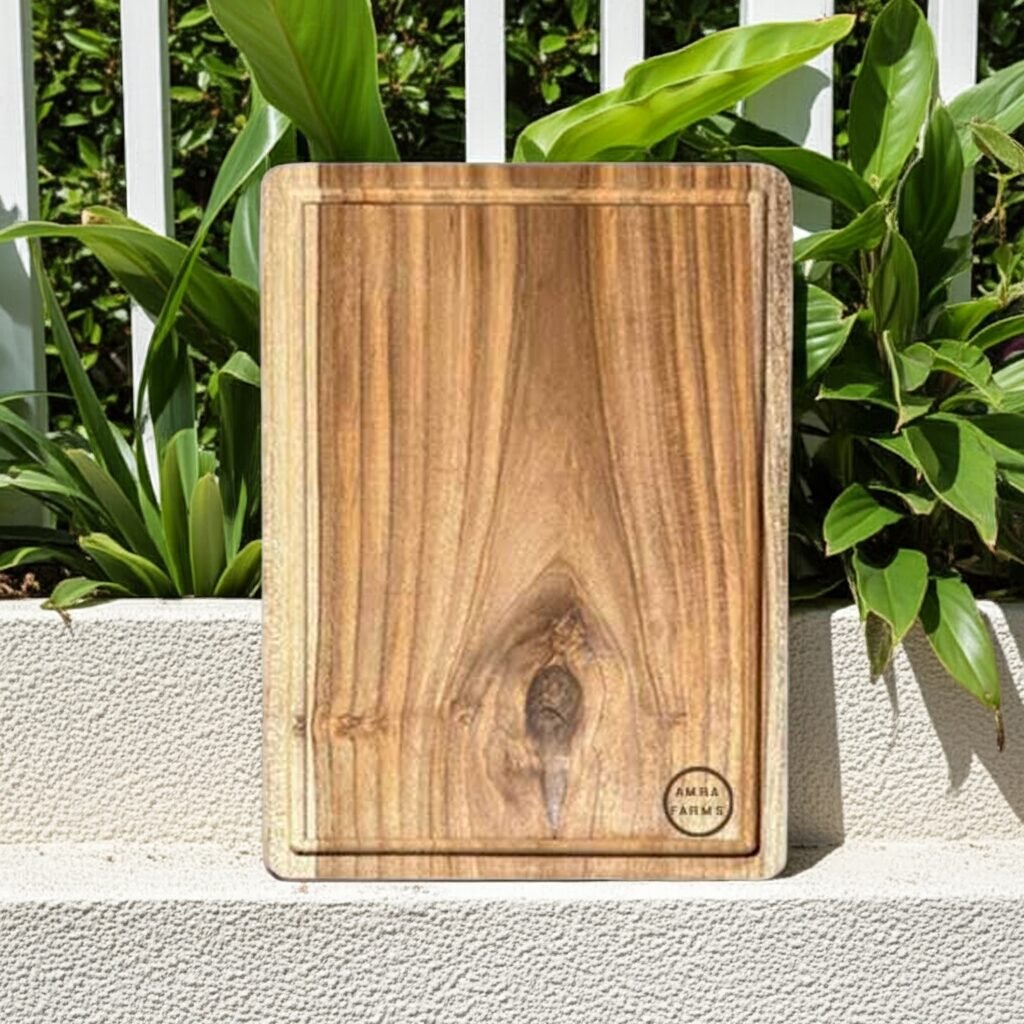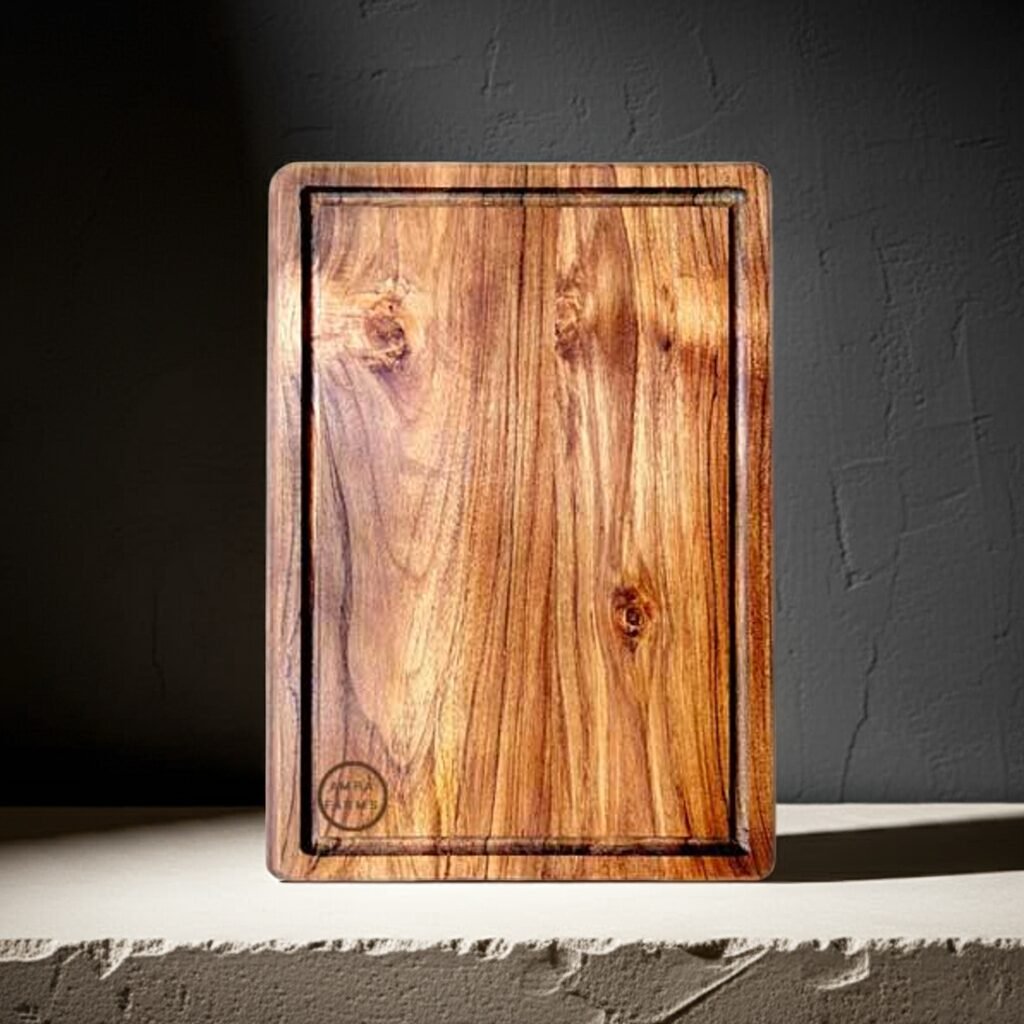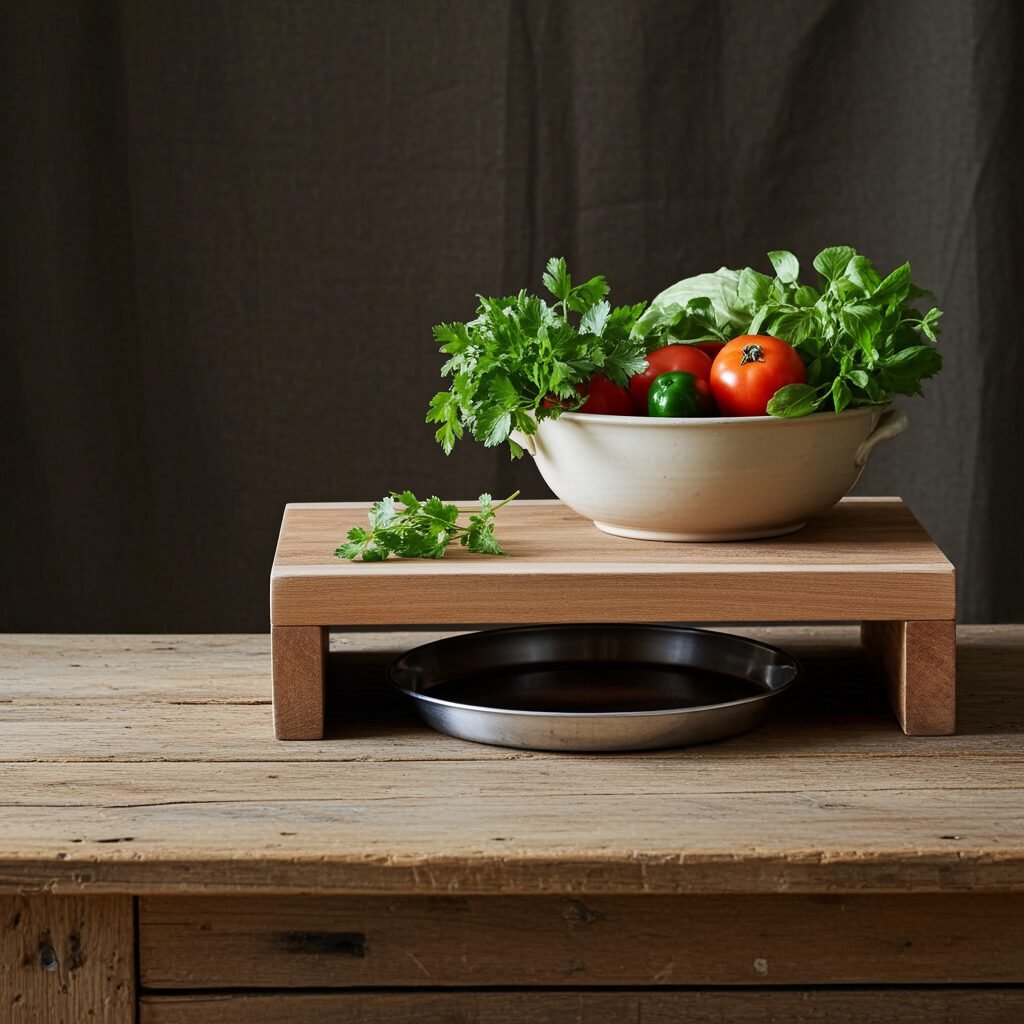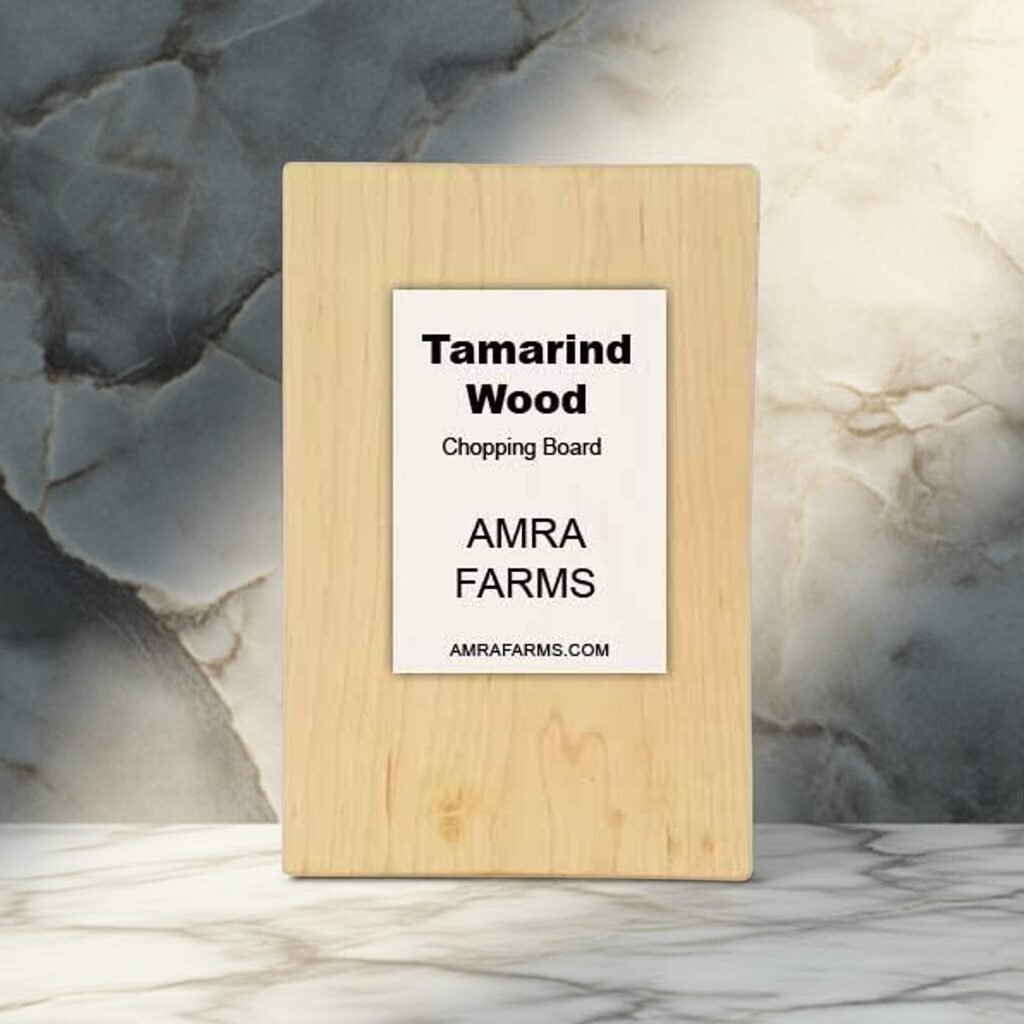Your cart is currently empty!
The Top Woods Used for Chopping Boards and Their Hardness Explained
Wood is the most used material for chopping boards. Even with so many other materials entering the market which are affordable and marketed to be durable, wood holds the largest market in the chopping board industry. Wooden boards are cheaper when locally acquired and vary from region, country, and often even between states or cities. In India, a wide range of wood is used to craft chopping boards. Even with so many local resources, some woods are imported for luxury cutting boards. This article explains some of the most common woods, both locally sourced and some imported to India to manufacture cutting boards.






Teak Wood Cutting Boards
Teak wood stands at the top for luxury boards online. It is not the most popular wood for creating cutting boards due to its cost. But when it comes to aesthetics, antibacterial features, and water resistance, teak wood is one of the best. Teak wood has a Janka hardness of 1070 LBF, which is considered hardwood. Forest teak is stronger, dense, rich in natural oils, antibacterial, and beautiful. Unfortunately, teak wood is also one of the most expensive woods locally available.
Tamarind Wood Cutting Boards
One of the most underrated woods, tamarind wood is known for its hardness, clean, yellow looks with straight tight grains. Tamarind wood has a Janka rate of 2690 LBF, one of the strongest among woods. Tamarind wood is hard, water-repelling, strong, and durable. They are one of the best materials for chopping boards, especially for cutting heavy vegetables and meat. They can take heavy chops with grace and stand the test of time. It is reasonably antibacterial, mold and fungus resistant, and easy to maintain. They are also one of the most affordable woods available in India. Though considered an exotic wood in western countries, tamarind wood cutting boards are very affordable in India, especially the southern part of India.
Mango Wood Cutting Boards
Affordable, rustic, and the best option for cutting vegetables. With a Janka hardness rating of 1070 LBF, mango wood is relatively strong for regular use. They are not the best of woods due to their lack of oil content. They lack natural oil content, resulting in more fungal and mold problems. Mango wood is very affordable though and a sustainable option. They are not recommended for humid climatic conditions or where moisture is high. They are also not the perfect wood for cutting meat. Use mango wood chopping boards for regular use for vegetables only.
Acacia Wood Chopping Boards
Acacia wood is considered a hardwood with a Janka hardness rate of 1,100–1,750 LBF. They have relatively high oil content and are beautiful dark wood with 3–4% natural oil content. They are naturally moisture resistant, sustainable, and relatively good with knives. Acacia wooden boards are the most exported wooden chopping boards from India. Even with the high maintenance needs and susceptibility to warping and cracking, Acacia still demands a good price. They are prone to mold and fungal attack in humid and wet conditions.
Sheesham Wood Chopping Boards
Sheesham is a wood widely available in India. It is moderately high in oil content and its Janka hardness is 1660 LBF. The wood is moderately priced between 5000 and 8000 Rs per cubic foot. The wood is dense and resistant to dings and cuts. The grains are appealing and aesthetically pleasing with a golden brown to reddish tone. It is naturally resistant to pests and easy to work with. On the other side, it is sensitive to moisture and is prone to warping and cracking. Sheesham is a high maintenance wood and requires regular oiling. The wood is dense and thus heavy too.
Neem Wood Chopping Boards
Neem is not a widely accepted wood for chopping boards due to the aftertaste it leaves on the food. The bitter taste is often observed in neem wood boards, which makes the wood not suitable for cooking and food prep. Wood soaked in water before cutting for a few weeks reduces the aftertaste in the wood. Neem is highly antibacterial and antifungal. The wood is not water resistant and is prone to cracking and warping. At a Janka rate of 1270, neem wood is tough. Unfortunately, the drawback of bitter taste when food is cut on neem wood makes it less desirable and marketable.
Imported Woods and Woods Less Used in Chopping Boards in India
| Wood Species | Janka Hardness (lbf) | Water Resistance | Antibacterial Features | Oil Content Ratio (%) | Price Range (INR/cu.ft) | Thickness (mm) | Hygiene | Porosity | Durability | Ease of Cleaning | Knife Feel | Maintenance | Material Type | Toxicity |
|---|---|---|---|---|---|---|---|---|---|---|---|---|---|---|
| Teak | 1,070 – 1,155 | Very High | Moderate to High | ~4-5% | 8,000 – 12,000 | 20-40 | Good but large pores can harbor bacteria | Moderate-High | Very durable | Moderate (needs oiling) | Medium (silica can dull knife) | Medium (semi-annual oiling) | Hardwood | Non-toxic |
| Tamarind | 2,690 | High | Moderate | Medium | 6,000 – 9,000 | 20-40 | Moderate | Medium | Very high | Moderate | Harder – can dull knives | Medium | Hardwood | Non-toxic |
| Mango | 1,070 | Moderate | Moderate | Low to Medium | 3,000 – 5,000 | 20-30 | Moderate | Medium | Moderate | Easy | Medium | Low | Hardwood | Non-toxic |
| Maple (Hard) | 1,450 | High (closed grain) | High | Low | 5,000 – 7,000 | 20-40 | Very hygienic | Low | Very durable | Easy | Good | Medium (regular conditioning) | Hardwood | Non-toxic |
| Maple (Soft) | 950 | Moderate | High | Low | 4,500 – 6,000 | 20-30 | Good | Low | Moderate | Easy | Good | Medium | Hardwood | Non-toxic |
| Walnut (Black) | 1,010 | Moderate | Moderate to High | Low to Medium | 7,000 – 11,000 | 20-40 | Good | Low | Durable | Easy | Good | Medium | Hardwood | Non-toxic |
| Acacia | 1,100 – 1,750 | High (oily wood) | High | ~3-4% | 4,500 – 7,000 | 20-40 | Good | Medium | Durable | Moderate | Slightly harder than maple | Medium | Hardwood | Non-toxic |
| Sheesham | 1,660 | Moderate to High | Moderate | Medium | 5,000 – 8,000 | 20-40 | Moderate | Medium | Durable | Moderate | Harder than mango | Medium | Hardwood | Non-toxic |
| Bamboo (Natural) | 1,380 | High | Moderate to High | Low | 3,000 – 5,000 | 15-30 | Good | Low | Durable | Easy | Medium | Low | Grass (Composite material) | Non-toxic |
| Bamboo (Strand) | 2,900 – 4,000+ | High | Moderate | Low | 4,000 – 6,000 | 15-30 | Good | Low | Very durable | Easy | Harder, knife caution needed | Low | Grass (Composite material) | Non-toxic |
| Neem | 1,270 | High | High | Medium | 3,500 – 6,000 | 20-30 | Very good | Medium | Durable | Moderate | Medium | Medium | Hardwood | Non-toxic |
| Cypress | 510 – 1,700 (avg 1,360) | Moderate | Low to Moderate | Low to Medium | 2,500 – 4,000 | 20-30 | Good | Medium-High | Moderate | Moderate | Soft, gentle on knives | Medium | Softwood | Non-toxic |
| Cherry | 950 | Moderate | Moderate | Low | 6,000 – 9,000 | 20-30 | Good | Medium | Moderate | Easy | Soft, knife-friendly | Medium | Hardwood | Non-toxic |
| Beech | 1,300 | Moderate to High | Moderate to High | Low | 3,000 – 5,000 | 20-40 | Good | Low | Durable | Easy | Medium | Medium | Hardwood | Non-toxic |
| Hinoki | 800 – 900 | Moderate | Moderate to High | Low to Medium | 6,000 – 10,000 | 20-30 | Very good | Low | Moderate | Easy | Soft | Medium | Softwood | Non-toxic |
| Ash | 1,320 | Moderate | Low to Moderate | Low | 3,500 – 6,000 | 20-30 | Moderate | Medium | Durable | Moderate | Medium | Medium | Hardwood | Non-toxic |
| Birch | 1,260 | Moderate | Moderate | Low | 3,000 – 5,000 | 20-30 | Moderate | Medium | Moderate | Easy | Medium | Medium | Hardwood | Non-toxic |
| White Oak | 1,360 | Moderate | Moderate | Low | 4,000 – 7,000 | 20-30 | Moderate | Medium | Durable | Moderate | Medium | Medium | Hardwood | Non-toxic |
| Red Oak | 1,290 | Moderate to Low | Low to Moderate | Low | 3,500 – 6,000 | 20-30 | Moderate | Medium-High | Moderate | Moderate | Medium | Medium | Hardwood | Non-toxic |
| Hickory | 1,820 | Moderate | Moderate | Low | 4,000 – 7,000 | 20-40 | Moderate | Medium | Durable | Moderate | Hard | Medium | Hardwood | Non-toxic |
| Purpleheart | 2,520 | Moderate | Low to Moderate | Low | 7,000 – 10,000 | 20-40 | Moderate | Low | Very Durable | Moderate | Hard | Medium | Hardwood | Non-toxic |
Maple Wood Chopping Boards
Maple comes in a wide range of hardness and it could vary from 950 LBF to 1450 LBF depending on the quality of the maple wood itself. Harder maple wood is close-grained. Sugar maple or hard maple has a close tight grain and is capable of taking cuts and is a knife-friendly surface. It is less porous, making it hygienic and the wood is neutral in color. This makes it easy to stain and discolor. The wood is also not water resistant and is not rot resistant compared to teak and acacia. Also, maple is a wood which has no color tones, making it plain and uniform, which may not be what most people look for in a wooden board.
Cypress Wood Chopping Boards
Cypress is not native to India and is often imported. Considered a softwood rather than a hardwood, cypress cutting boards are not as common in India. They are naturally antibacterial and have a pleasant aroma. Being a softwood, they are light and easy to handle and also gentle on the knives. But this also makes the wood soft and not durable. The wood is also highly porous and the natural odor of the wood, though pleasant, may sometimes affect the taste of the food. In terms of maintenance, cypress wood requires more maintenance to avoid cracking, staining, and warping. Oiling the boards regularly is important, and you will be required to keep the board dry at all times. Cypress Janka hardness scales from 510–1700 LBF with an average of 1360.
Walnut Wood Chopping Boards
Walnut is a prized wood which is expensive. The wood is known for its dark colors and beautiful grains. Walnut wood, though available in limited quantities in India, is mostly imported from China. The price is much higher in comparison to most other woods and is considered a premium, luxury wood. The wood has a Janka hardness of 1010 and has moderate oil content. The wood is moderately moisture resistant, naturally antibacterial, and durable. They are also knife-friendly. The cons are the high price and high maintenance. They are susceptible to scratches and dents, which may require frequent reconditioning.
Cherry Wood Chopping Boards
Not a common wood in India, cherry wood has a Janka hardness of 950 and is known for its rich reddish-brown hue, knife friendliness, natural antibacterial properties, and ease of maintenance. While it is cost-effective in the western countries where cherry wood is available in abundance, the price of cherry wood is much higher in India. The wood, being relatively soft, requires maintenance and is prone to scratches and dents. They are also susceptible to warping without proper care.
Other common woods which are imported include beech, birch, ash, white oak, and hickory. All these woods are imported either from China or the USA in very small quantities and are not very sustainable in Indian climatic conditions.
Categories
Products
- Buy Wooden Vegetable Cutting Boards Online
- Wooden Kitchen Accessories Tools
- Buy Butcher Block & Meat Cutting Boards Online
- Buy Premium Edge Grain Single Block Wooden Chopping Boards Online
- Buy The Best Teak Wood Chopping Boards Online In India
- Buy Wooden Cutting Boards With Handle For Kitchen
- Mango Wood Chopping Boards
- Single Block Chopping Boards
- Tamarind Wood Chopping Boards
- Wooden Platter Boards , Pizza Platters & Charcuterie Boards
Tamarind Wood Cutting Board Teak Wood Cutting board
